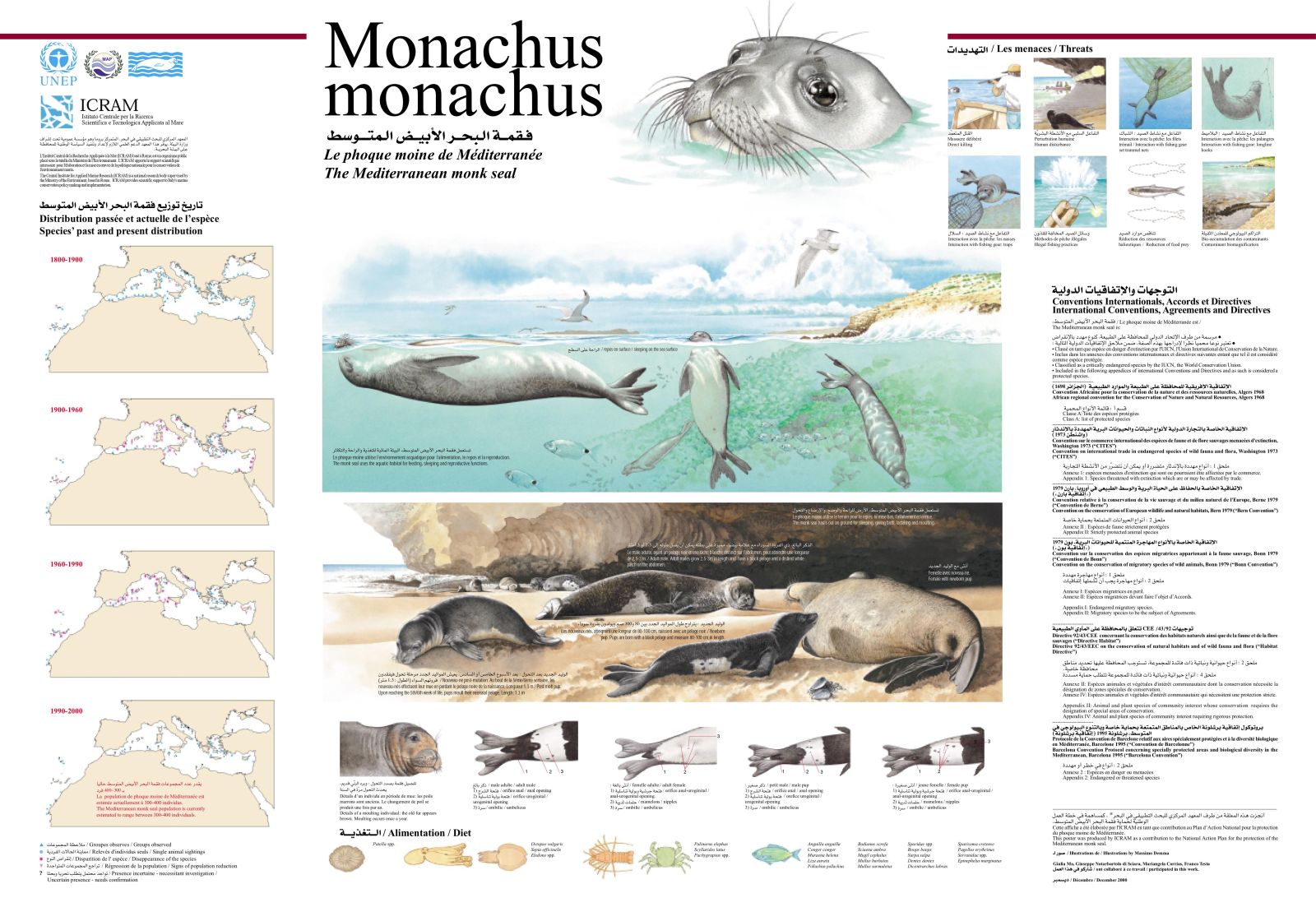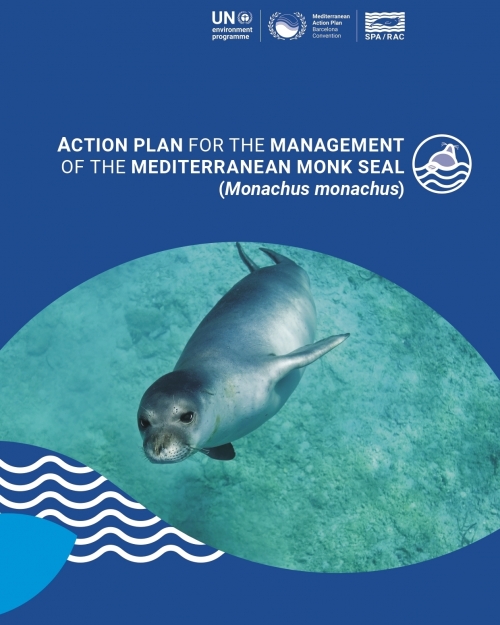Background
The population of the Mediterranean monk seal, Monachus monachus, have declined rapidly and drastically during the twentieth century. Since 1985, the species was recognized within the framework of the Barcelona Convention as a species to be protected as a matter of priority.
In that year, during their 4th ordinary meeting, the Contracting Parties adopted a declaration – referred to as the Genoa Declaration – which included, amongst the priority targets to be achieved in the decade 1986-1995, the “protection of the endangered marine species” including the monk seal.
The Action Plan for the management of the Mediterranean monk seal (Monachus monachus) was adopted by the Convention’s Contracting Parties in 1988 following the Genoa Declaration.
Objectives
This Action Plan for the management of the Mediterranean monk seal outlines both short-term and longer-term actions which, if taken together may succeed in reducing pressures enough to permit gradual recovery of the remaining populations. The main aims of the monk seal action plan are to:
- reduce adult mortality
- promote the establishment of a network of marine reserves
- encourage research, data collection, and rehabilitation programmes
- implement information actions targeting fishing communities and various other stakeholders
- provide a framework for the coordination, review and financing of relevant activities.
Recommendations
The first priority is the preservation of remnant populations of the monk seal. The challenge is then to find that delicate balance between the biological requirements of the monk seal and human uses of the Mediterranean and its resources that will allow the species to recover to a viable population level
The Action Plan recommends the following general priorities:
- Reduction in seals mortality by encouraging the co-existence of fishermen and monk seals.
- Establishment of a network of marine reserves: the creation of marine reserves across the Mediterranean, covering both existing and potential monk seal habitats. Monk seal reserves should protect suitable caves or other breeding and resting areas, and should be surrounded by a buffer zone to minimize disturbance.
- Research, data collection and rehabilitation: development of programme on data collection on seal biology and ecology and the interaction of seals with fisheries; establishment of national networks of observers; evaluation of compiled information on a regional basis; exchange information; Establishment of rescue centres.
- Information programmes: development of special information activities for fishermen, fishing communities and tourists and the tourist industry; production of information materials for military authorities, industrial developers and the shipping industry; development of training programmes for protected area managers responsible for monk seal reserves.
Updates
The Contrating Parties to the Barcelona Convention adopted in 2013 A Regional strategy for the conservation of Monk Seals in the Mediterranean (2014-2019).
A roadmap for a fully recovery of the species was developed within the 2014-2019 SPA/RAC regional strategy, highlighting particularly the urgent need to develop monitoring activities in line with the EU Marine Strategy Framework Directive (EU MSFD) and the Ecosystem Approach (EcAp), through the three agreed common indicators: species distributional range, population abundance and population demographic characteristics. Indeed, the Integrated Monitoring and Assessment Programme (IMAP) suggested the stability in the monk seal density as well as an expansion of its spatial distribution (recolonization of suitable habitats) as a target.
Media



